- Screen Colours:
- Normal
- Black & Yellow
The lost Queen Victoria statue in front of Christchurch Mansion from Rowell Bell
Page 9 of the latest Ipswich Society Newsletter [Issue 233], states that they were cast iron but the 1904 Queen Victoria and the lions were bronze.
Postcard courtesy David Miller
‘Ipswich Art School’ and Eduardo Paolozzi from Michael Lumb
I was delighted to find the latest issue of the Newsletter in my post and read it with as much interest as always and in particular the article on Eduardo Paolozzi. One point, and please forgive me if you have already been told this, but I suspect either a slip of the pen or a typo because your comment after the article by Graham Day says that he was ‘…a visiting lecturer at the Ipswich School of Art.’ This may well be the case but your next sentence reads ‘He opened the present Art School in 1987…’ I am pretty certain that you meant it to read the art department of Ipswich School which, last time I looked, had a plaque on the front of the building commemorating that.
I was completely unaware of the connection of the construction of some of his sculptures in Ipswich; very interesting. It occurs to me that, with 2024 being one hundred years since he was born – and with the availability of the ex-Art School building for exhibitions – it would be wonderful to mount a major exhibition of Paolozzi’s sculpture, potentially in collaboration with other bodies. I recall the exhibition of his prints but the sculptures would be an entirely different matter.
Eduardo Paolozzi and Len Smith from Kevin Smith
I was interested to read the article from my friend Graham Day about C.W. Juby links to Eduardo L. Paolozzi and thought I could add some personal insight with some photographs as Len, the welder at C.W. Juby, was my father.
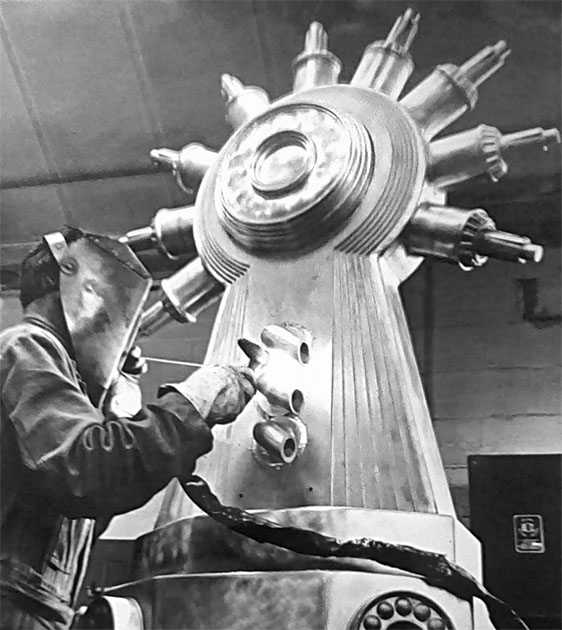 Above: Len Smith working on a sculpture
Above: Len Smith working on a sculpture
Eduardo and Len had a unique working relationship and became friends despite coming from different backgrounds. Such was their mutual respect for each other's skill often Eduardo would direct Len to assemble and weld a piece of sculpture in a certain way only for Len to say it was not possible in engineering practice. Eduardo would then leave it to Len’s discretion to complete the piece, often going off to London and not returning until the next week, confident his work of art would be completed.
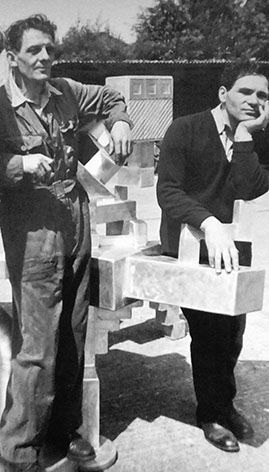
Above: Len Smith and Eduardo Paolozzi
Eduardo was once quoted in a Sunday Times article that he had worked with Len for so long their relationship was like an old married couple with a grunt or nod at the right time. As a family we were often invited to spend a Sunday with the Paolozzi family at their Thorpe-le-Soken home, Freda his wife making us very welcome although Eduardo would often disappear into his studio.
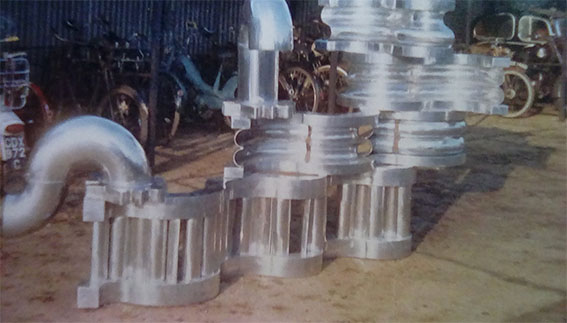
At the launch of the Paolozzi exhibition at the Tate Gallery, such was Eduardo's respect for Len that he was invited to London to help set up the exhibition, staying at Eduardo's studio in London and meeting many art celebrities – quite an experience for a welder from Ipswich.
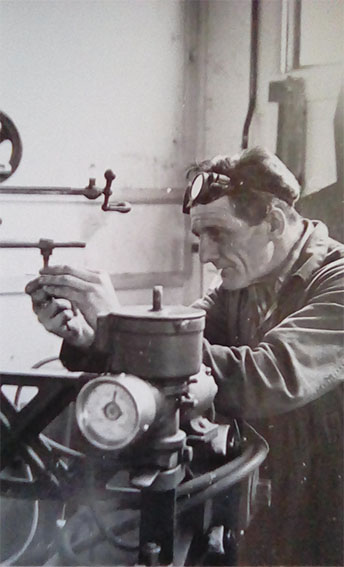
Like Graham I have a passion for the engineering history of Ipswich and this is just another example of the diverse legacy many of these companies brought to Ipswich. One footnote regarding Sor Of Hing on St Matthew’s: C.W. Juby and Len were involved in the fabrication of the fixings for this sculpture.
[Photographs courtesy Kevin Smith]
Corrigendum
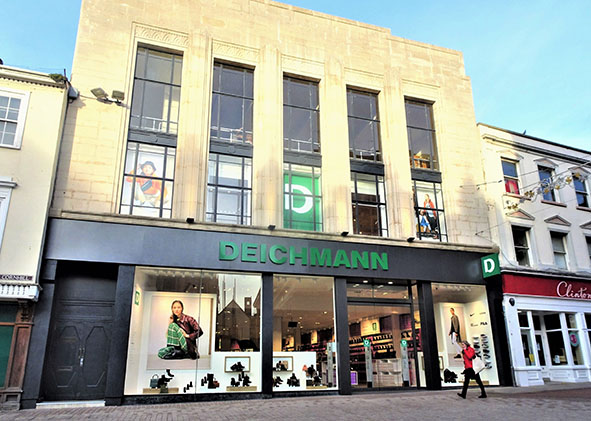
Tony Cross points out that the Newsletter ‘has misspelt the name of the German shoe company that has moved into Tavern Street: Deichmann, roughly pronounced 'dyke-man' (its literal meaning).’
–Ed.
Decent housing/surroundings and our well-being from Izzy Lane
I wondered if your readers have seen this https://theconversation.com/people-living-in-newer-homes-found-lockdown-more-difficult-new-research-147724. It’s a report about a study (available at http://placealliance.org.uk/wp-content/uploads/2020/10/Place-Alliance-Homes-and-Covid-Report_2020.pdf) that looked into the impact of where we live and how difficult we found lock-down.
The article points out that, ‘A key finding from this research was that the least comfortable dwellings, least supportive neighbourhoods for everyday needs, and weakest sense of community correlated directly with the age of housing’ with people living in the most recently built neighbourhoods reporting the most dissatisfaction with their home and the local area. Amongst other things, the study found that having more space indoors meant people were more comfortable, and access to private, outdoor space – whether a garden or a balcony – was also important.
When it came to the local neighbourhood, parks and green spaces were key to people’s satisfaction with the area they live in, along with having local shops a few minutes’ walk away. People were also happier where they had access to footpaths and cycle-paths that were quieter and had less traffic.
I thought it was interesting, given the work the Ipswich Society does with regard to planning applications, and trying to ensure houses are built to a decent standard, with plenty of open spaces. Clearly the Society does know what it’s talking about!
[Home comforts: how the design of our homes and neighbourhoods affected our experience of the Covid-19 lockdown and what we can learn for the future was published by Place Alliance – campaigning for place equality, October 2020.]